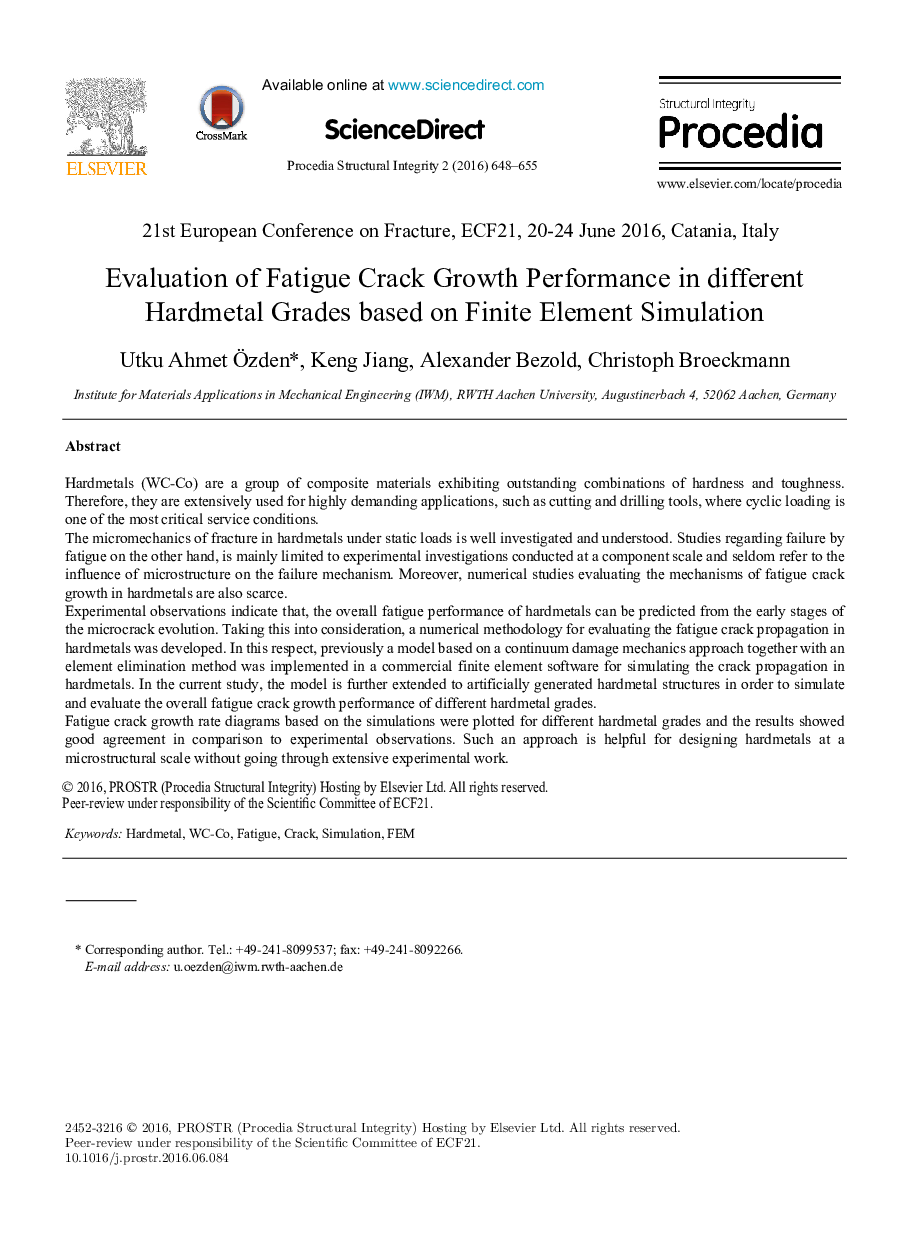| Article ID | Journal | Published Year | Pages | File Type |
|---|---|---|---|---|
| 1558725 | Procedia Structural Integrity | 2016 | 8 Pages |
Hardmetals (WC-Co) are a group of composite materials exhibiting outstanding combinations of hardness and toughness. Therefore, they are extensively used for highly demanding applications, such as cutting and drilling tools, where cyclic loading is one of the most critical service conditions.The micromechanics of fracture in hardmetals under static loads is well investigated and understood. Studies regarding failure by fatigue on the other hand, is mainly limited to experimental investigations conducted at a component scale and seldom refer to the influence of microstructure on the failure mechanism. Moreover, numerical studies evaluating the mechanisms of fatigue crack growth in hardmetals are also scarce.Experimental observations indicate that, the overall fatigue performance of hardmetals can be predicted from the early stages of the microcrack evolution. Taking this into consideration, a numerical methodology for evaluating the fatigue crack propagation in hardmetals was developed. In this respect, previously a model based on a continuum damage mechanics approach together with an element elimination method was implemented in a commercial finite element software for simulating the crack propagation in hardmetals. In the current study, the model is further extended to artificially generated hardmetal structures in order to simulate and evaluate the overall fatigue crack growth performance of different hardmetal grades.Fatigue crack growth rate diagrams based on the simulations were plotted for different hardmetal grades and the results showed good agreement in comparison to experimental observations. Such an approach is helpful for designing hardmetals at a microstructural scale without going through extensive experimental work.
